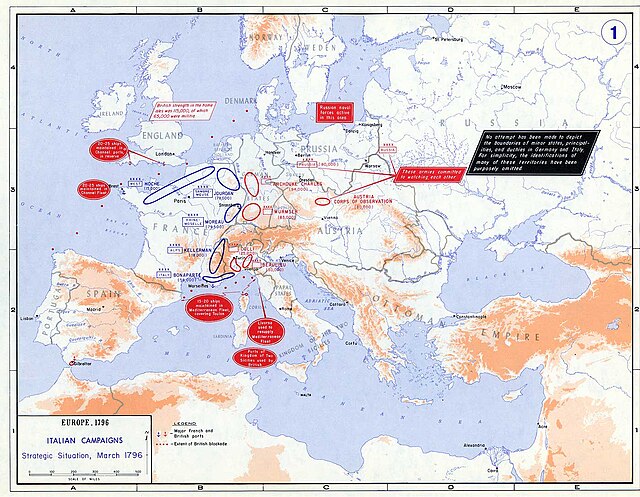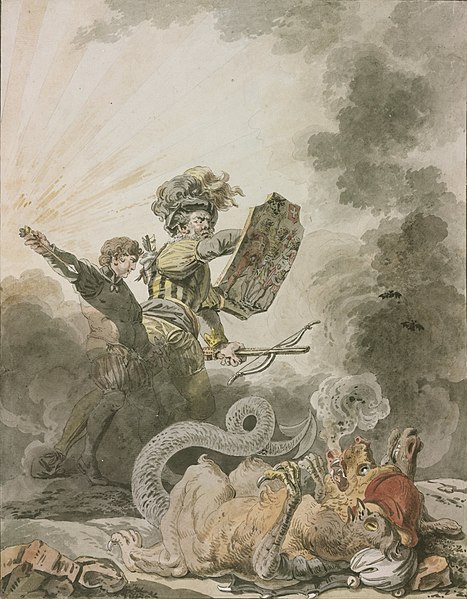The Helvetic Republic was a sister republic of France that existed between 1798 and 1803, during the French Revolutionary Wars. It was created following the French invasion and the consequent dissolution of the Old Swiss Confederacy, marking the end of the ancien régime in Switzerland. Throughout its existence, the republic incorporated most of the territory of modern Switzerland, excluding the cantons of Geneva and Neuchâtel and the old Prince-Bishopric of Basel.
Strategic situation of Europe in 1796
Alois von Reding led Central Swiss troops against the French.
William Tell fights the revolution (1798), by Dunker, praises the struggle of the Old Confederation against the Helvetic revolution supported by French invasion. It depicts the Swiss folk hero William Tell, carrying a shield with the Rütlischwur, and his son fighting the revolution, represented as a chimera wearing a phrygian cap
The awakening of the Swiss (1798), by Midart, celebrates the transformation of the Old Confederation into the Helvetic Republic. It shows a Swiss who wakes up from his sleep (the ancien régime) and is handed his weapons by Liberty. In the background, the rising sun and the Gallic rooster herald the new era
A sister republic was a republic established by the French First Republic or by local revolutionaries during the French Revolutionary Wars. These republics, though nominally independent, relied heavily on France for protection, making them more akin to autonomous territories rather than independent states. This became particularly evident after the declaration of the French Empire, when several states were annexed, and the remaining turned into monarchies ruled by members of the Bonaparte family.
1799 caricature in which the Prussian ("God, how it grows; It's terrifying"), Russian ("That should be good to eat"), and Austrian ("Don't touch, my friend, it's poisonous") monarchs watch how republics spring up like mushrooms around France, spreading towards other European capitals





